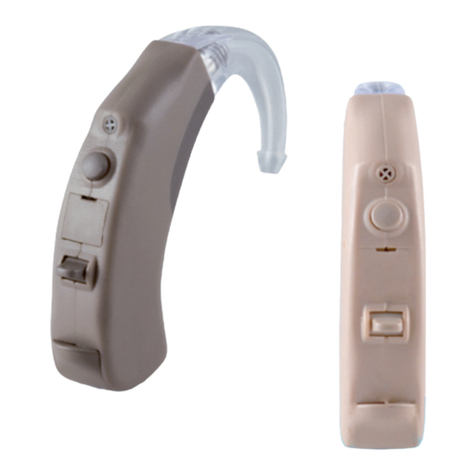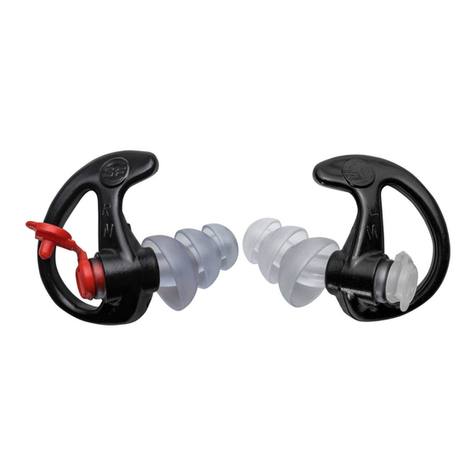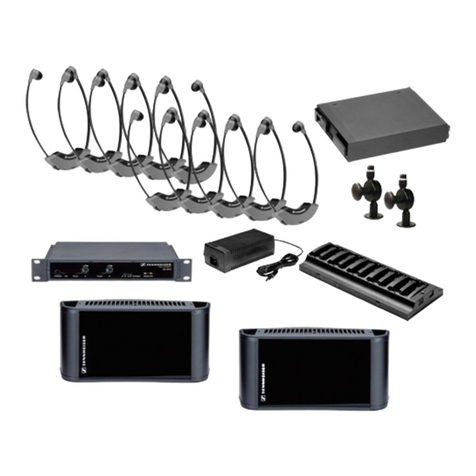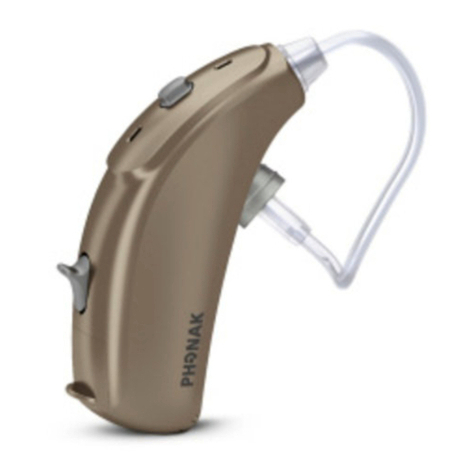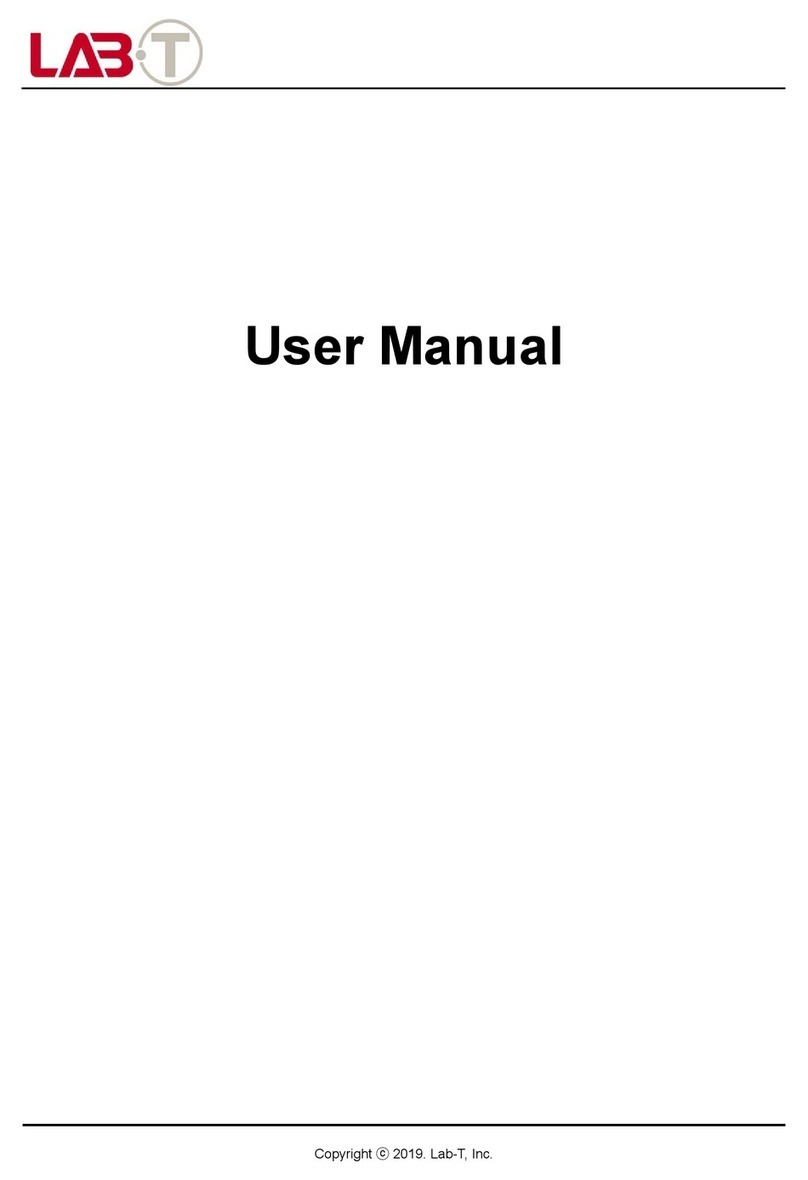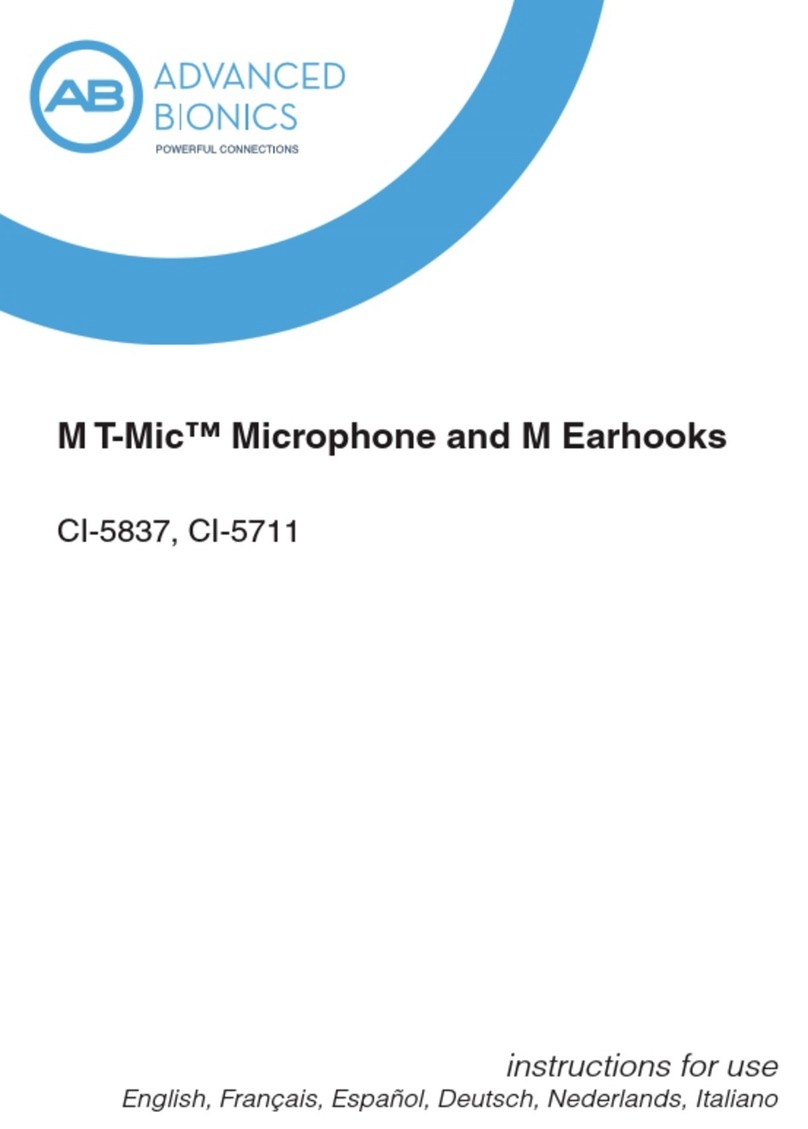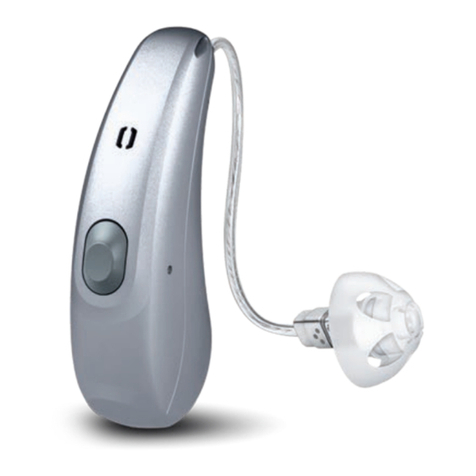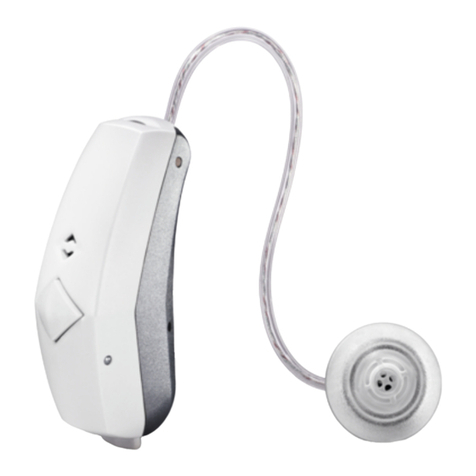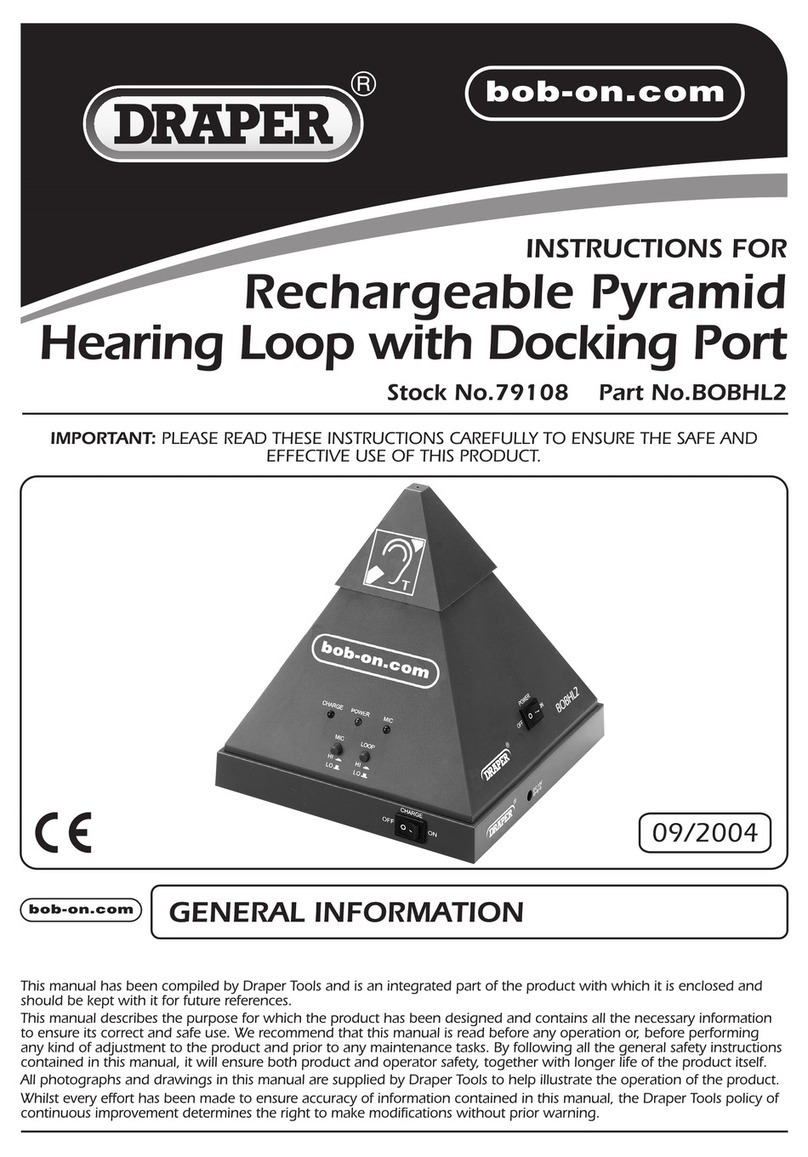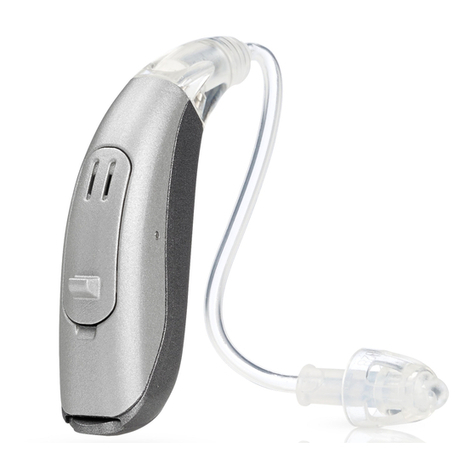Acto Oticon User manual

INSTRUCTIONS FOR USE miniRITE

Thank you
Thank you for choosing our product as your means to better hearing.
To support your efforts, we have put great care and attention into making sure that your
new hearing instruments are of the highest quality and that they are easy to use and
maintain.
We recommend that you read this manual carefully to achieve the maximum benefit of
your new hearing instruments.
Congratulations on your decision to actively improve your hearing with today’s most
advanced hearing technology in the market.
Contents
Instrument view miniRITE 5a
Instrument view miniRITE Power with Power Dome 5b
Instrument view miniRITE Power with Mould 5c
Changing batteries 7
Turning your instruments ON and OFF 9
Left/Right ear marking 10
Putting on your instrument 11
Push-button 12
Programs (Optional) 14
Volume Control (Optional) 16
Standby (Optional) 17
Tamper-resistant battery door (Optional) 19
Auto Phone (Optional) 20
Caring for your hearing instrument 22
Daily maintenance with Mould 24
Daily maintenance with Domes 26

5a
Instrument view miniRITE
Your ear piece
Open Domes:
6mm 8mm 10mm
Micro mould
Plus dome
Speaker unit
Sound outlet
IMPORTANT NOTICE
Please familiarise yourself with the entire contents of this booklet before using your
hearing instru ments. It contains instructions and important informa tion about the use
and handling of your hearing instru ments and batteries.
CAUTION
The miniRITE Power is a powerful hearing instrument. In case you are fitted with
miniRITE Power, never allow others to wear your hearing instruments as incorrect or
wrongful usage could cause permanent damage to their hearing.
Wax protection
Microphone openings
Push-button
Battery door
Using your hearing instrument 30
Common problems and their solutions 36
Warranty Certificate 40
Warnings Yellow Pages

5b
Instrument view miniRITE Power with Power Dome
Your ear piece
Power Domes:
8mm 10mm 12mm Plus dome
Speaker
Sound outlet
Wax protection
Microphone openings
Push-button
Battery door

5c
Instrument view miniRITE Power with Mould
Sound outlet +
wax protection
system
Ventilations openings
Battery door
Microphone openings
Push-button

7
Changing batteries
Your hearing instrument battery size is 312. Batteries
perform differently. Ask your hearing care professional
for help choosing a high quality battery for your hearing
instrument.
A worn out battery should be removed immediately.
When the battery power is low, you will hear 2 beeps.
This pre-warning starts when the battery has only
a few hours of operation left. The pre-warning will be
repeated with moderate intervals to indicate it is time
to change the battery.
If the battery runs out the instrument turns off. When
that happens, 4 beeps are played to indicate that the
instrument is no longer operating.
It is not an indication of a malfunction.

9
Turning your instruments ON and OFF
Turn ON your hearing instrument by closing the battery door completely with the battery
in place. When the battery door is closed the instrument will start up by playing a jingle.
This indicates that the battery is working and the instrument is operating.
Turn OFF your hearing instrument by opening the battery door slightly until a click is felt.
To preserve the battery, make sure your hearing instrument is switched off when you are
not wearing it.
IMPORTANT NOTICE
Open the battery door fully to
allow air to circulate whenever
you are not using your hearing
instrument, especially at night!
ON OFF
Click Click
To replace the battery, follow these instructions:
• Open the battery door completely by pushing the raised edge in the bottom of
the instrument. Remove the old battery.
• Remove the sticky label from the + side of the new battery.
• Insert the new battery so that its + marking faces the + sign printed on the battery
door. Close the battery door.
Any moisture on the battery surface should be wiped
off before use.
When you change battery, it will take a few seconds
before the battery works to full capacity.
To assist the handling of the batteries, the magnet
placed at the end of the tool can be used.
8
MultiTool

10 11
Left/Right ear marking
Hearing instruments are fitted to the uniqueness of each ear, which means if you have
two instruments then your left hearing instrument is programmed differently from your
right. That is why it is important to distinguish between the left hearing instrument and
the right.
In order to easily identify whether it is left ear or right ear instrument, colour markings
may be applied inside the battery door.
A blue dot marks the LEFT instrument.
A red dot marks the RIGHT instrument.
Putting on your instrument
Place the speaker, with the ear piece attached, into your ear
first (1) and then place the instrument behind your ear (2).
If the power instrument has a Mould as ear piece, make sure
it is positioned in the ear so it perfectly fits the ergonomics
of the ear canal in a tight and comfortable way.
Make sure that the ear piece is placed so that the tube
follows the contour of the skin.
If the instrument has an ear grip, place it in the ear as
indicated in drawing 3 and 4 so it follows the contour of
the ear.
2
1
3
4

12
Push-button
Your hearing instrument has a push-button.
If you have one instrument, the push button can be used for switching between different
programs.
If you have two instruments, the push-button can be used for both adjusting the volume
and switching between programs.
Push
The push-button on your hearing instrument can be programmed to one of 3 functionalities.
Left Right
Only program shift:
Press shortly to change program.
Only volume control: *
Press shortly to adjust the volume.
Both volume control and program shift: *
Press shortly to adjust the volume and press long (about 2 seconds)
to shift program.
* only if you have two instruments!
Using 2 instruments
If you have two instruments the push-button on one instrument will change the status on
both hearing instruments. This means, when you adjust the program or volume for one
instrument, it automatically adjusts the other.
This is programmed by your Hearing Care Professional!

14 15
Programs (Optional)
Your hearing instrument can have up to 4 different programs.
When switching between the different programs, your hearing instrument will beep.
The number of beeps will indicate which program you are using.
One beep, when you switch to program 1
Two beeps, when you switch to program 2
Three beeps, when you switch to program 3
Four beeps, when you switch to program 4
Press the push-button to switch forwards in the program cycle, e.g. from P1-P2.
If you have two instruments, then:
The RIGHT hearing instrument switches forwards in the program cycle, e.g. P1-P2.
The LEFT hearing instrument switches backwards in the program cycle, e.g. P2-P1.
Below you can see a description of the programs available in your hearing instrument.
Prg. 1:
Prg. 2:
Prg. 3:
Prg. 4:

16 17
Volume Control (Optional)
Only when using two instruments a volume control can be activated. The volume control
allows you to adjust the volume in specific listening situations to the level you feel
comfortable with.
When pressing the push-button on one instrument, the volume is adjusted in both
instruments simultaneously.
To increase volume, shortly press the push-button on the RIGHT ear instrument.
To decrease volume, shortly press the push-button on the LEFT ear instrument.
When the hearing instrument is turned on, it starts up at a preferred volume level.
When adjusting the volume control to the preferred level, this is indicated by a beep.
Standby (Optional)
Press the button for a minimum of 3 seconds to set the instrument in standby mode.
To reactivate the instrument, push the button shortly again.
Use the standby function if you need to silence the instrument
while you have the instrument on.
WARNING
Do not use the standby function as a switch off as the hearing instruments still draws
current from the battery in this mode.
Push
3 sec

19
Tamper-resistant battery door (Optional)
This is strongly recommended for infants, small children and people with learning
difficulties.
The battery door is designed only to be opened by using a tool. Use the MultiTool to
unlock the door by inserting it into the indent on the door side and then tip it to open.

20 21
Auto Phone (Optional)
The hearing instrument may have an Auto Phone functionality. When the hearing instrument
is close to a telephone receiver, the Auto Phone will activate a Phone Program. When the
Phone Program is activiated you will hear a number of beeps.
When you end your telephone conversation, the hearing instrument will automatically
return to the previous program.
Not all telephones can activate the Auto Phone.
The telephone receiver may need to have a special magnet
fitted. Please follow the separate instructions for mounting
the magnet, which is available from your Hearing Care
Professional.
WARNING
If you use an Autophone magnet:
• Keep magnets out of reach of children and pets. If a magnet is swallowed,
see a doctor immediately.
• Do not wear the magnet in a breast pocket and always keep it 30 cm away from
active implanatable devices. Preferably, use the telephone with magnet on the
opposite side than a pacemaker or other active implantants.
• Keep the magnet 30 cm away from credit cards and other magnetically sensitive
devices.

22 23
Caring for your hearing instrument
Your ear canal produces ear wax (cerumen) which may clog up the earpiece. Therefore
your hearing instrument contains a filter to prevent wax accumulation. Consult your
Hearing Care Professional for instructions about the specific wax protection system in
your hearing instrument and how it can be replaced.
When handling a hearing instrument, keep it over a soft surface to avoid damage if you
drop it.
Before retiring at night:
• Make sure that there is no ear wax in any of the earpiece openings since it may reduce
the hearing instrument’s efficiency.
• Open the battery door to allow air to circulate.
Cleaning the instruments
A range of dedicated cleaning tools is prepared for the special purpose of cleaning the
instrument. These should be used to ensure the best care and performance of your hearing
instruments.
Use the cloth to wipe clean the surface of the instruments.
Replace the brush when necessary. Just pull it out of the tool and insert a new fresh brush.
Press the new one firmly into the handle.
BrushCover Handle
Magnet
Screwdriver
MultiTool

24 25
Daily maintenance with Mould
The Mould should be cleaned regularly:
• Clean the ventilation opening by pressing the brush through the hole while twisting
it slightly.
The hearing instrument itself with Mould must never be washed or immersed in water or
other liquids!
Replace the wax protection system
1. Remove the tool from the shell. The tool has two ends, one with a new filter
and one with the removal tool.
2. Insert the removal tool into the sound outlet of the Mould.
3. Pull the used wax filter out slowly keeping the tool straight.
4. Turn the tool 180°.
5. Push the new filter into the sound outlet and gently remove the tool.
6. Discard the used tool. Do not reuse.
The wax filter should be changed:
• When you can see that the filter placed in the Mould is clogged.
• When the hearing instrument does not sound normal.
Use the Wax protection systems delivered by your Hearing Care Professional!
Detailed instructions on replacing the wax protection system are also found on
its packaging.

26 27
Daily maintenance with Domes
Clean the speaker unit daily. Use the cloth and rub off any earwax.
The dome should not be cleaned. When you require a fresh, clean dome, remove the
existing one and put on a fresh one.
We recommend the dome to be replaced at least once a month or as directed by your
Hearing Care Professional.
Changing the dome
The dome is easy to replace. Replace it whenever needed.
Use a finger nail and hold the bottom of the dome. Then pull it off. Place the new dome
on the speaker and ensure that it is fastened securely.
2
13

28 29
Under the dome you will notice a white wax filter attached to the end of the speaker.
This is a wax filter that will keep debris from damaging the speaker. If this filter becomes
clogged, contact your Hearing Care Professional for service and replacement of the filter.
IMPORTANT NOTICE
The dome is made of a soft, medically approved rubber material. If the dome comes
off in the ear canal, it will not cause any harm. If you can – carefully take it out. If
necessary, let another person help you. Do not push the dome into the ear canal.
Do not push the speaker unit into the ear again before the dome is removed from the
ear. If you have any doubts, contact your Hearing Care Professional.
Avoiding heat, humidity and chemicals
Your hearing instrument must never be exposed to extreme heat e.g. left inside a parked
car in the sun. They must never be exposed to a lot of moisture e.g. steam baths, showers
or heavy rain. Nor must they be dried in microwave ovens or other ovens.
Wipe the batteries carefully if moisture is present as it may affect their performance.
Using an anti-humidity kit can help to avoid these problems and may even extend the life
of your hearing instrument. Consult your Hearing Care Professional for further advice.
The chemicals in cosmetics, hairspray, perfume, after shave lotion, suntan lotion and
insect repellant can damage your hearing instrument. You should always remove your
hearing instrument before applying such products and allow time for the product to dry
before reinserting your hearing instrument.
If you use lotion, be sure to wipe your hands dry before putting on your hearing instrument.

30 31
Using your hearing instrument
It takes time to adjust to a new hearing instrument. How long this adjustment takes
differs from person to person. It will depend on a number of factors, such as whether you
have had a hearing instrument before and the degree of your hearing loss.
Six easy steps to better hearing
1. In the quiet of your home
Try to accustom yourself to all the new sounds. Listen to the many background sounds and
try to identify each sound. Bear in mind that some sounds will seem different from what
you are used to. You may have to learn to identify them again. Note that in time you will get
accustomed to the sounds in your environment – if not please contact your Hearing Care
Professional.
If using the hearing instrument makes you tired, take them off for a little while and have a
rest. Gradually, you will begin to be able to listen for longer periods of time. Soon, you will
be able to wear your hearing instruments comfortably all day long.
2. Conversation with another person
Sit with someone else in a quiet room. Face each other so you can read facial expressions
easily. You may experience new speech sounds, which can seem a little disturbing in the
beginning. However, after the brain has adapted to the new speech sounds, you should
hear speech clearer.
3. Listen to radio or TV
When listening to the TV or the radio, start out by listening to news commentators since
they usually speak clearly, then try other TV programs.
If you find it difficult to listen to TV or radio, ask your Hearing Care Professional for more
information regarding the Oticon ConnectLine system and other available accessories.

32 33
4. In group conversations
Group situations are usually accompanied by a greater degree of background noise, and
are, therefore, naturally more difficult to cope with. In such situations, therefore, focus
your attention on the person you want to hear. If you miss a word, ask the speaker to
repeat.
5. Using the telephone
When using the telephone tilt the receiver edge lightly on your
cheek-bone in order to let the sound flow directly into the hearing
instrument microphone opening. This way, the hearing ïnstrument
will not whistle and you ensure the best conditions to under-
stand the conversation. When you have the receiver in this posi-
tion, remember to speak directly into the microphone on the
telephone in order to ensure good understanding in the
opposite “end of the line”.
If you find it difficult to use the telephone, ask your Hearing Care Professional for more
information regarding the Oticon ConnectLine system and other available accessories.
6. Wireless and mobile phones
Your hearing instrument is designed to comply with the most stringent Standards of
International Electromagnetic Compatibility. However not all mobile phones are hearing
instrument compatible. The varying degree of disturbance can be due to the nature of
your particular mobile phone.
If you find it difficult to obtain a good result while using your mobile telephone, your
Hearing Care Professional should be able to give you advice on available accessories to
enhance listening capabilities.
If you find it difficult to obtain a good result while using your mobile telephone, ask your
Hearing Care Professional for more information regarding the Oticon ConnectLine system
and other available accessories.

34 35
Use your hearing instruments all day long
The best way to ensure better hearing is to practice listening until you can wear your
hearing instruments comfortably all day. In most cases, you will not get the full benefit of
the hearing instuments if you use them infrequently.
Your hearing instruments will not restore normal hearing. Nor will they prevent or
improve a hearing impairment resulting from a physiological condition. What they will
give you, however, is help towards making better use of the hearing ability that you have.
If you have two hearing instruments always wear both.
The most important benefits of wearing two hearing instruments are:
• Your ability to localize sounds will improve.
• It will be easier to understand speech in noisy surroundings.
• You will experience a fuller, more comfortable sound picture.
Table of contents
